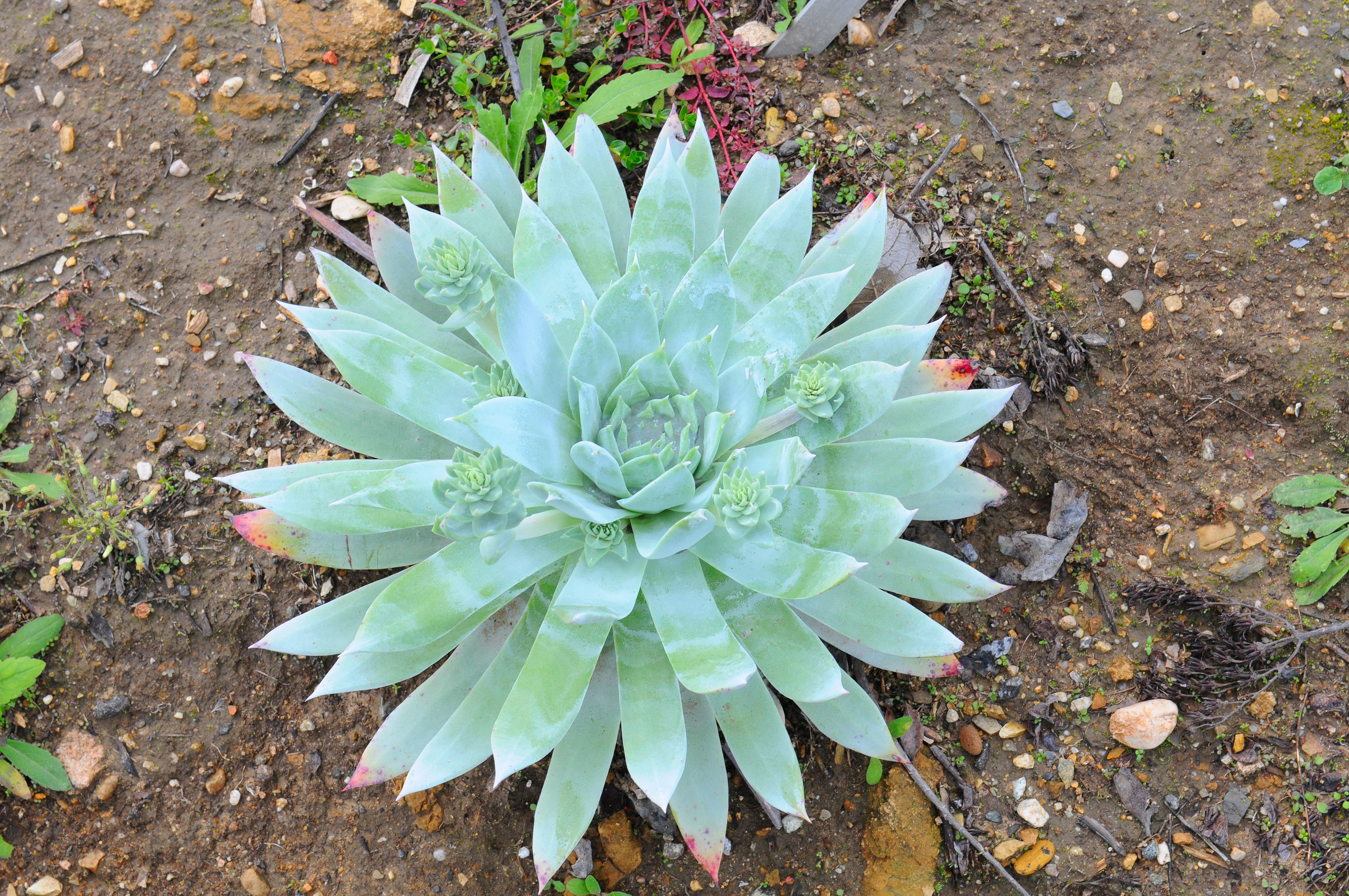Britton's liveforever
(Dudleya brittonii)

Description
Dudleya brittonii, with the common names Britton's dudleya, Britton's liveforever and giant chalk dudleya, is a succulent plant in the family Crassulaceae. It is native to the coast of northern Baja California, Mexico. Both forms of the plant have yellow leaves on a clustered rosette atop a large reddish-purple peduncle. The white form of the plant has a chalky epicuticular wax that reflects light and reacts with water. The green form of the plant is more common and found throughout a wider range. It is among the largest of the Dudleya. Dudleya brittonii has a short, stout caudex, often covered in dry leaves. Rosettes often grow solitarily out of the caudex. Basal leaves are numerous and erect. Younger leaves are linear-lanceolate, older leaves are oblong-lanceolate and much more wide and turgid at the base. Leaves are 7 to 11 cm long, and older leaves are 4.5 to 5.5 cm wide at the base. Leaves are flat above the middle but convex on both sides below, with a submedian keel on the upper surface, apiculate to acuminate, often with a red subulate tip. With age, leaves turn reddish-heliotrope. The flowering stem arises from the basal leaves, thin, erect, and reddish-purple. Bracts are horizontal, very thin, long-lanceolate, half encircle the stem, acuminate, light green or red, and prone to withering quickly after flowering. The inflorescence is cymose, about 10 cm across but narrow laterally, with vivid red branchlets holding erect, slender pedicels 7 to 9 cm long. The flower has a bright green calyx about 5 mm long, with acute, long-lanceolate segments. The corolla is erect, with a length of about 9 mm, cleft two-thirds to the base, composed of linear-lanceolate segments. The petals are hyaline to pale white, with the keel imbued in yellow. The leaves of the glaucous form of Dudleya brittonii are covered with a dusty, chalky, mealy white epicuticular wax. The wax in its mealy state on the leaves is attracted to water and coats drops on the leaves and prevents their evaporation. The wax has the highest measured ultraviolet reflectivity of any plant. Dudleya brittonii was discovered by a Mr. Howard E. Gates at the mouth of a canyon north of the 32nd parallel, supposedly "midway between Descanso and Ensenada." D. brittonii was described by Donald A. Johansen in 1933, in the fourth volume of the Cactus & Succulent Journal of America.
Taxonomic tree:







